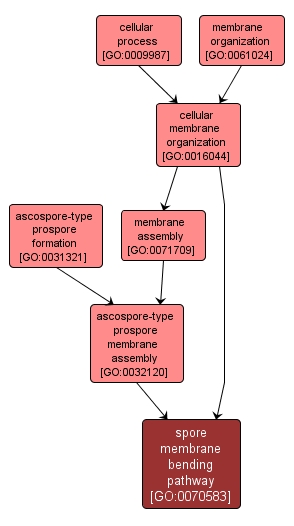GO TERM SUMMARY
|
| Name: |
spore membrane bending pathway |
| Acc: |
GO:0070583 |
| Aspect: |
Biological Process |
| Desc: |
The process by which a bending force is generated in the prospore membrane to form the characteristic curved shape of the prospore. |
Synonyms:
- forespore membrane bending
- FSM bending
- ascospore-type prospore membrane bending
|
|

|
INTERACTIVE GO GRAPH
|














